Outsource Semantic Segmentation for Deep Learning
Deep learning has become very successful when businesses work with images as data. Currently, it is at a stage where it works almost better than humans on different use cases. The most significant problems that humans want to solve with deep learning are object detection, image classification, and semantic segmentation.
With 750 billion images on the internet, businesses need to find ways to get their images found. For online businesses that want to be found by the right audience, semantic segmentation is crucial. In simple terms, semantic segmentation takes the primary task of image classification one step further. It tries to accurately find out the exact boundary of objects in an image by clustering parts of the image together which belong to the same class of objects.
Image segmentation is a computer vision task. The goal of the task is to label all the pixels of an image with the corresponding class of exactly what is being represented. Because every pixel in the image is presented, the task is often referred to as dense prediction.
For businesses that want to invest in semantic segmentation, it’s important to know the difference between other similar services.

Semantic Segmentation vs Instance Segmentation and Semantic Segmentation vs Object Detection
There are different ways to label images for online use, including semantic segmentation, instance semantic segmentation, and object detection. To effectively label images, businesses need to be able to distinguish between semantic segmentation vs instance segmentation. Let’s compare these tasks:
- In semantic segmentation, all the objects of an image that belong to the same class share a label. But with instance segmentation, every detected object acquires its unique label. This type of segmentation is usually implemented when the amount of objects or their independence is completely relevant.
- Semantic segmentation does not indicate different instances in the same category. For example, in an image, all people are marked blue). With instance segmentation, the task distinguishes between different instances of the same category. For example, different objects are distinguished by different colors. This is the difference between instance segmentation vs semantic segmentation.
Let’s now look at semantic segmentation vs object detection. Object detection is a computer vision technique used for locating samples of objects in images or videos. The algorithms of object detection usually leverage deep learning or machine learning to produce useful results. This is the difference between object detection vs semantic segmentation.
It’s also important to note that there is a difference between image segmentation vs semantic segmentation and semantic segmentation vs panoptic segmentation.
The Application of Semantic Segmentation in Deep Learning and AI
Semantic segmentation plays a vital role in a wide range of real-world image tagging deep learning applications. For example:
- Radiology and medicine
- Road sign detection
- The evaluation of construction materials
- Video surveillance
- Autonomous vehicles
Furthermore, semantic segmentation is largely applied in medical applications, such as for the measurement of tissue volumes.
Semantic segmentation deep learning has also been effectively applied to segment satellite images in remote sensing, including different techniques for precision agriculture and urban planning. Furthermore, images collected by drones have been segmented using deep learning annotation techniques, presenting the opportunity to address critical environmental problems linked to climate change.

Semantic segmentation helps train AI models by assigning each pixel in an image to a particular class of objects. Instance segmentation 3d cuboid annotation can add further detail to training imagery by individually labeling objects belonging to the exact same class. Let’s explore:
- Autonomous vehicles
When it comes to autonomous vehicles, safety is important. Self-driving cars must navigate complex environments and evade dangerous situations. To achieve this, semantic segmentation works to divide elements, for example, the road from the sidewalk, or the vehicles from pedestrians. This enhances safety.
- Waste management
The management of waste and the process of recycling is crucial for protecting the environment. The process of semantic segmentation in training images teaches waste management AI models to sort waste into different categories, while also identifying the quantity of each waste type.
- Security
Security cameras offer key information for law enforcement parties and can also help to stop crimes from occurring. But, they must be continually monitored to work effectively. Semantic segmentation-based AI models have the potential to provide this ongoing presence.
- Fashion
For AI models to differentiate between types of clothing items, they have to be trained with semantically segmented data for images.
The Use Cases of AI and Deep Learning Semantic Segmentation in Different Industries
Semantic segmentation is used in a vast number of fields, including:
- Recognizing faces
- Recognizing handwriting
- Searching for images in the virtual world
- Automobiles that can drive themselves
- Mapping satellite and aerial imagery for virtual try-ons
- Diagnostics and imaging in medicine
Most often, 2d bounding box annotation service is used for more complicated tasks than other image annotation methods. This is because it enables robots to develop a higher-level judgment. Some of the industries that use semantic segmentation most often include:
- Fashion
- Waste management
- Security
- Medicine
- Automobile
Approaches Used in Semantic Segmentation
A broad semantic segmentation architecture can be thought of in the following way:
An encoder network is followed by a decoder network. The encoder network is generally a pre-trained classification network such as VGG/ResNet. This is followed by a decoder network. The decoder’s task is to semantically launch the discriminative features learnt by the encoder in the pixel space to get a dense classification.
Unlike classification where the result of the deep network is the only necessary thing, semantic segmentation not only needs discrimination at the pixel level but a mechanism to project the discriminating features learnt at various stages of the encoder launched onto the pixel space.
Three approaches employ three different mechanisms as a part of the decoding mechanism:
- Network-based semantic segmentation that is fully convolutional
The Fully Convolutional Network (FCN) in its original form learns a unique mapping from pixels to pixels. This happens without pulling the regional proposals. This network pipeline is an elongation of the classical CNN.
- Region-level semantic segmentation
Region-based approaches typically follow the recognition pipeline. This approach first extracts free-form regions from images and describes them. This is followed by region-based classification. Region-based predictions are easily transformed into pixel predictions, typically by labeling a pixel according to the highest-scoring region.
- Supervised semantic segmentation
Most of the suitable methods in semantic segmentation depend on a big number of images with pixel-based segmentation masks. But manually annotating these masks is rather time-consuming and commercially expensive. As a result, some regular supervised methods have recently been proposed. These methods are dedicated to fulfilling semantic segmentation by using annotated bounding boxes.
Common Challenges in Semantic Segmentation
Semantic segmentation, a crucial aspect of computer vision, involves the partitioning of digital images into segments, each corresponding to a specific object or category. This technique plays a critical role in applications ranging from self-driving cars to medical imaging. Despite the powerful image segmentation techniques available, certain challenges persist in the realm of semantic segmentation:
- Dealing with Complex Visual Scenes
One of the foremost challenges arises while dealing with complex visual scenes. In the real world, images are rarely simple and often consist of numerous overlapping objects, diverse backgrounds, and varying lighting conditions. The sophistication of the segmentation in image processing needs to match this complexity.
For instance, consider panoptic segmentation, a method that handles both things (countable objects like people, cars) and stuff (uncountable regions like grass, sky). This process is significantly complicated by the variability and complexity of real-world scenes. The algorithm must be robust enough to distinguish between an array of similar-looking objects and adept enough to discern even the minutest details.
- Handling Unbalanced Class Distribution
Unbalanced class distribution presents another challenge. In many cases, certain classes may be over-represented while others may be under-represented. For example, in a cityscape image, buildings and roads might dominate, while instances of cyclists or pedestrians may be sparse. This imbalance can bias the performance of the segmentation model, leading to inaccurate results.
In the context of semantic segmentation, this challenge is amplified. To address this, advanced strategies such as class balancing techniques are employed. However, the perfect implementation of these techniques is far from simple, demanding a robust understanding of the dataset and the segmentation model in use.
- Managing High Annotation Costs
Semantic segmentation is a pixel-level task, requiring every single pixel in an image to be labeled. This means that an immense amount of detail is needed, translating into significant time and labor costs. The meticulous nature of these segmentation images also leaves ample room for human error.
When considering large datasets, these costs escalate exponentially. For businesses, this often proves to be a major hurdle. Some resort to automated annotation tools to mitigate this challenge, while others may look at outsourcing as a viable solution to ensure the balance between cost, speed, and accuracy.
Semantic segmentation, despite its immense potential, does pose several challenges, from handling complex visual scenes and managing class imbalance to controlling high annotation costs. However, with ongoing advancements in image segmentation techniques and strategies to manage these issues, the field is steadily progressing towards overcoming these obstacles.
Top 5 Semantic Segmentation Tools
When looking into deep learning semantic segmentation, it’s key to invest in the right tools. Let’s take a look at some of the best semantic segmentation tools to use:
- Labelbox
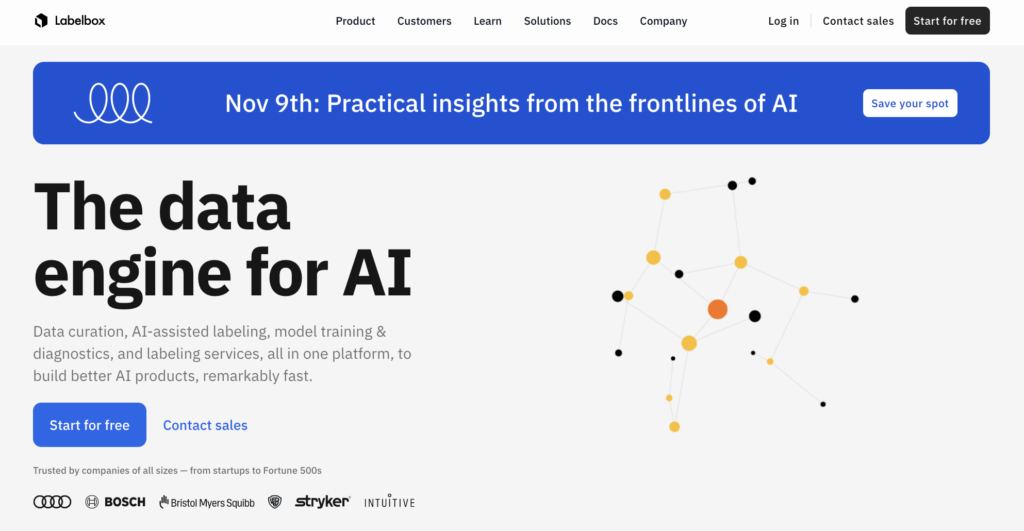
This is a training data and semantic segmentation labelling tool designed from three different core layers that enable the entire process from labeling and cooperation to iteration. It is quite a new tool and has quickly become one of the most popular labeling platforms. Labelbox presents AI-enabled labeling resources, data management, labeling automation, human workforce, and more.
- Dataloop
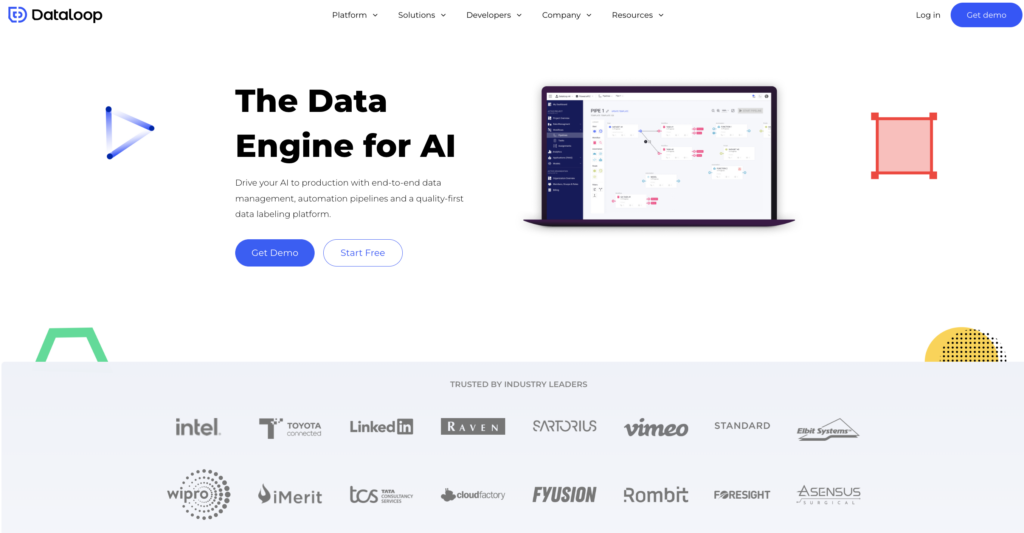
This is an all-in-one cloud-based image annotation semantic segmentation platform with embedded resources and automation for producing high-quality datasets. It is created to accommodate the whole Artificial Intelligence lifecycle including model evaluation, annotation, and model improvement by using human feedback in the loop.
- Scale AI
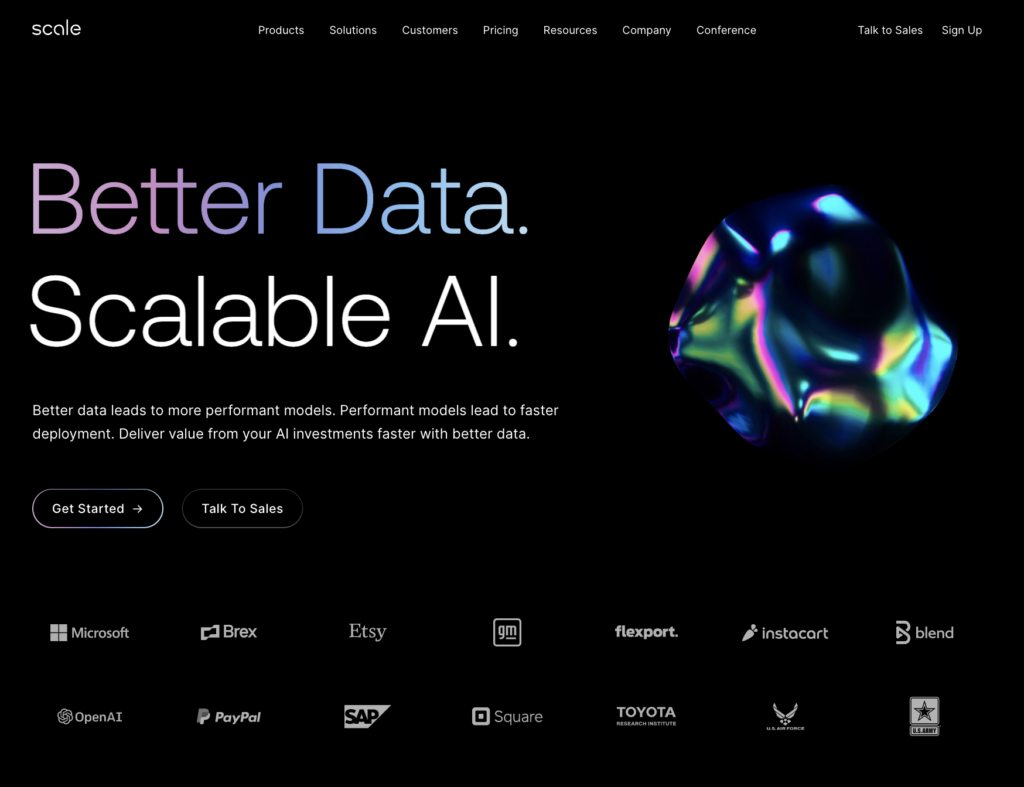
This is an efficient data platform that allows annotations of large volumes of image, and video data. It delivers Machine Learning-powered pre-labeling, dataset management, and AI-assisted data annotation designed towards data processing for autonomous tasks.
- CVAT
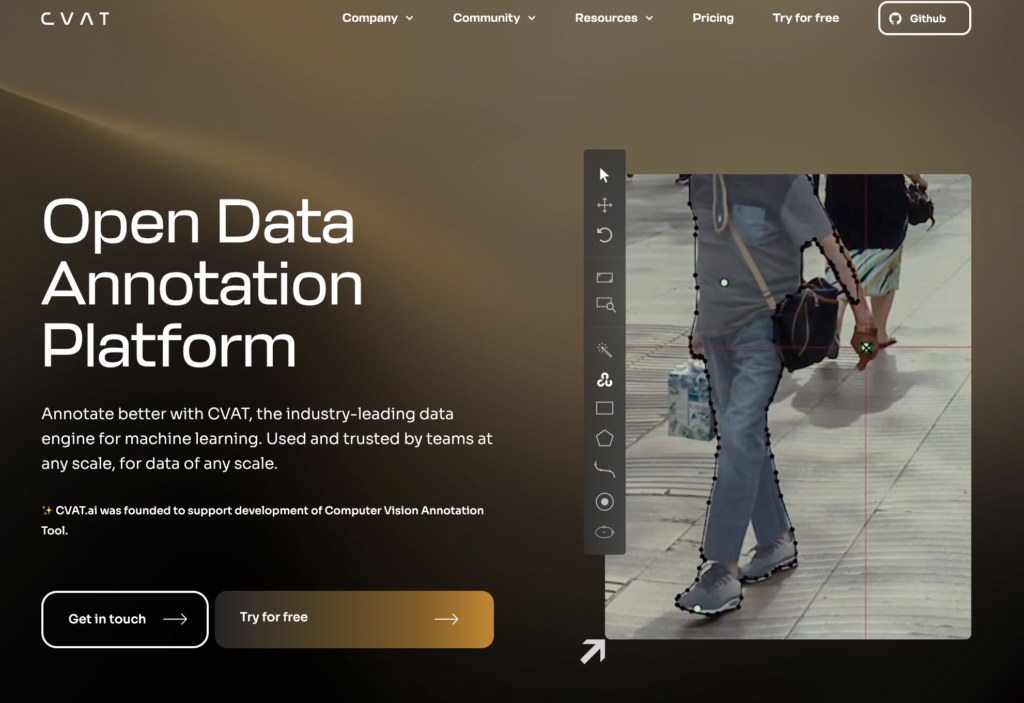
As the name suggests, Computer Vision Annotation Tool is one of the most popular free solutions for semantic data annotation. It supports both image and video data, and can be deployed on a server or used as a web solution for small projects.
- V7
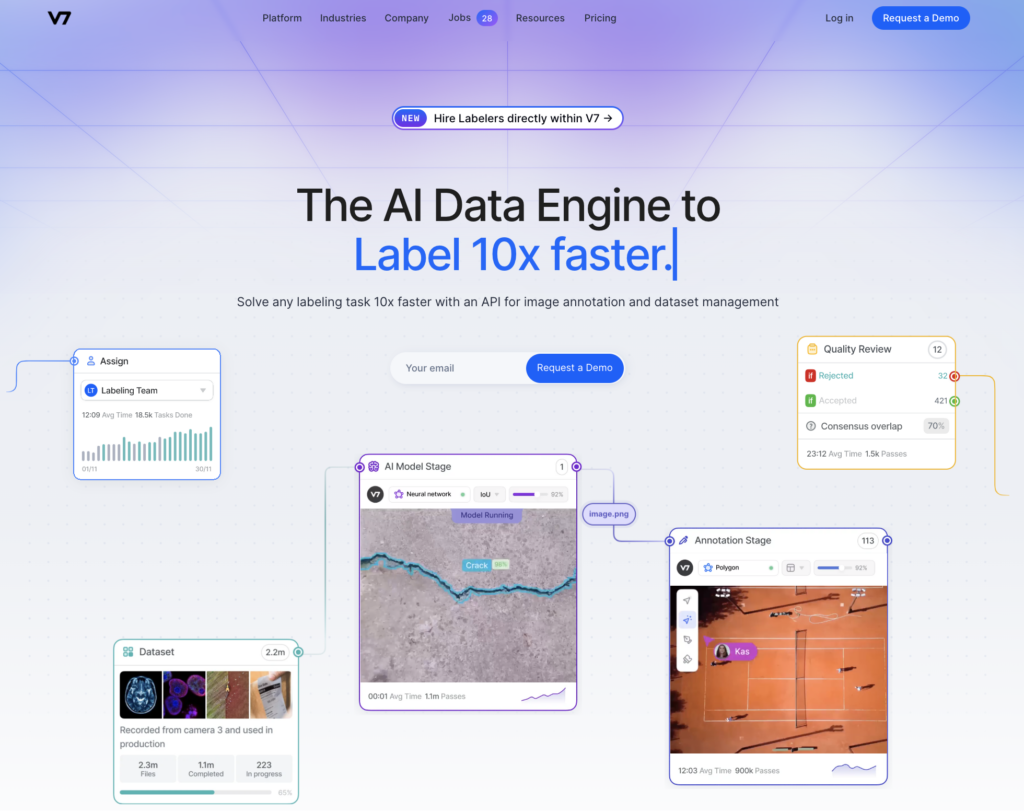
V7 is a powerful automated annotation platform combining image annotation, dataset management, video annotation, and automated ML model training to complete labeling tasks automatically. This tool allows teams to manage, annotate, store and automate data annotation workflows in images and video.
Before choosing a tool, it is crucial to do some research to check if it suits your business’ unique processes.
Reasons to Outsource Semantic Segmentation to Professionals
For many businesses looking to develop artificial intelligence or machine learning models, there’s a choice between creating an in-house team or outsourcing data labeling. Many businesses think that delivering data labeling in-house can increase security. But other businesses consider building their own team to be a costly job. They see outsourcing as a big-time and resource saver.
Let’s take a look at some of the reasons to outsource semantic segmentation annotation to a professional outsourcing vendor:
- Access to a large group of talent
Often, finding local talent can be tricky. By working with an outsourcing vendor, businesses can gain access to a big pool of talent that has the right knowledge, skills and experience for specific semantic segmentation machine learning tasks.
- Saving costs
One of the main reasons for businesses to outsource a semantic segmentation computer vision team is to save money. By working with professionals remotely, businesses can save money on hiring an office, buying hardware and software and offering HR solutions to staff.
- Freeing up resources
Businesses may need to outsource a department to free up staff needed on other projects. Business expansions frequently need additional duties for existing staff and outsourcing is a great solution for having not enough personnel to fill new demands.
- Improving productivity
Typically, outsourced professionals are dedicated to working on one project at a time. They also don’t have other tasks to take care of in the company. As a result, they offer businesses more efficiency and productivity with image and 3D semantic segmentation.
When choosing to outsource image and video semantic segmentation, it’s essential to choose the right service provider. The right vendor will find out exactly what your needs are and work with an effective approach to source the right talent.

Mobilunity-BPO.com: a Provider of Semantic Segmentation Specialists
For effective video and image semantic segmentation tasks within a business, it’s important to hire the right talent. Ukrainian-based outsourcing company Mobilunity-BPO.com specializes in offering highly skilled and experienced dedicated labelers for a variety of tasks.
These labellers help businesses to learn their AI more efficiently. With Mobilunity, you can also opt for a managed service, where you hire a team of part-time labelers, to work on your project simultaneously. This solution is ideal for short-time projects, where only a specific dataset has to be labeled, or the need for labeling is not stable from month to month. It can also be used for projects with tight deadlines.
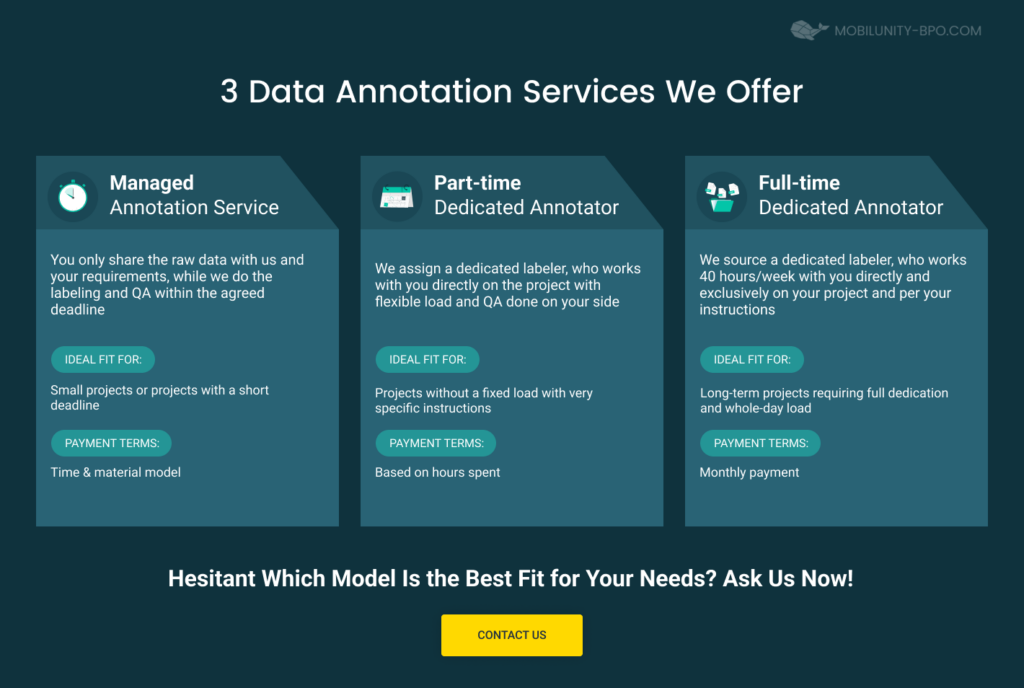
With over 10 years of experience, Mobilunity-BPO.com has access to a diverse pool of highly skilled computer vision semantic segmentation talent that can work with a variety of businesses, big and small. Through the years, Mobilunity-BPO.com has become a leading vendor for many businesses around the globe and in many different industries, including big data, communication, online media and more.
Businesses choose Mobilunity-BPO.com because our process is simple but highly effective. It includes:
- Determining our clients’ precise needs
- Sourcing the right candidates
- Assisting with the full onboarding process
- Ensuring ongoing project success by checking in with all parties